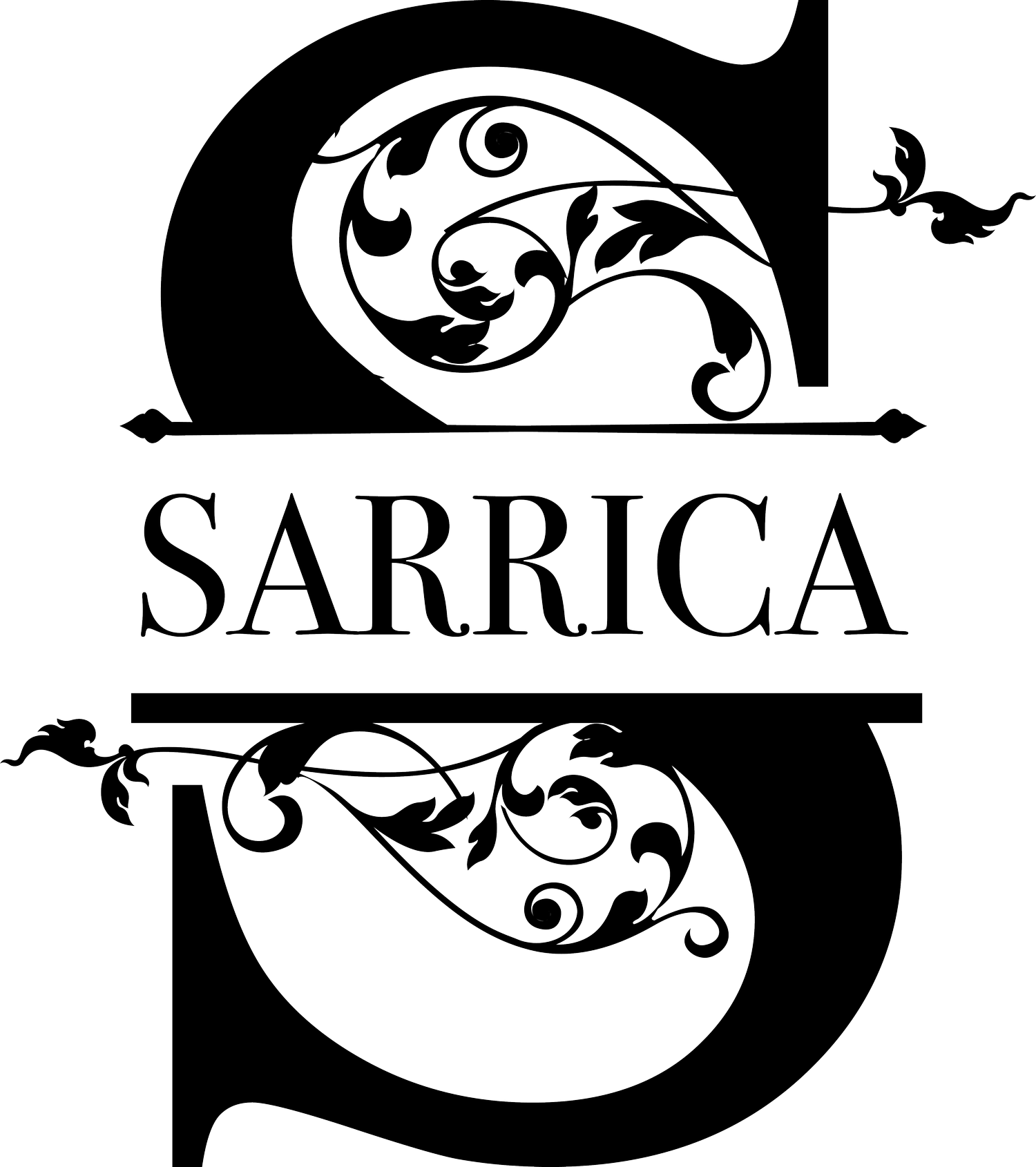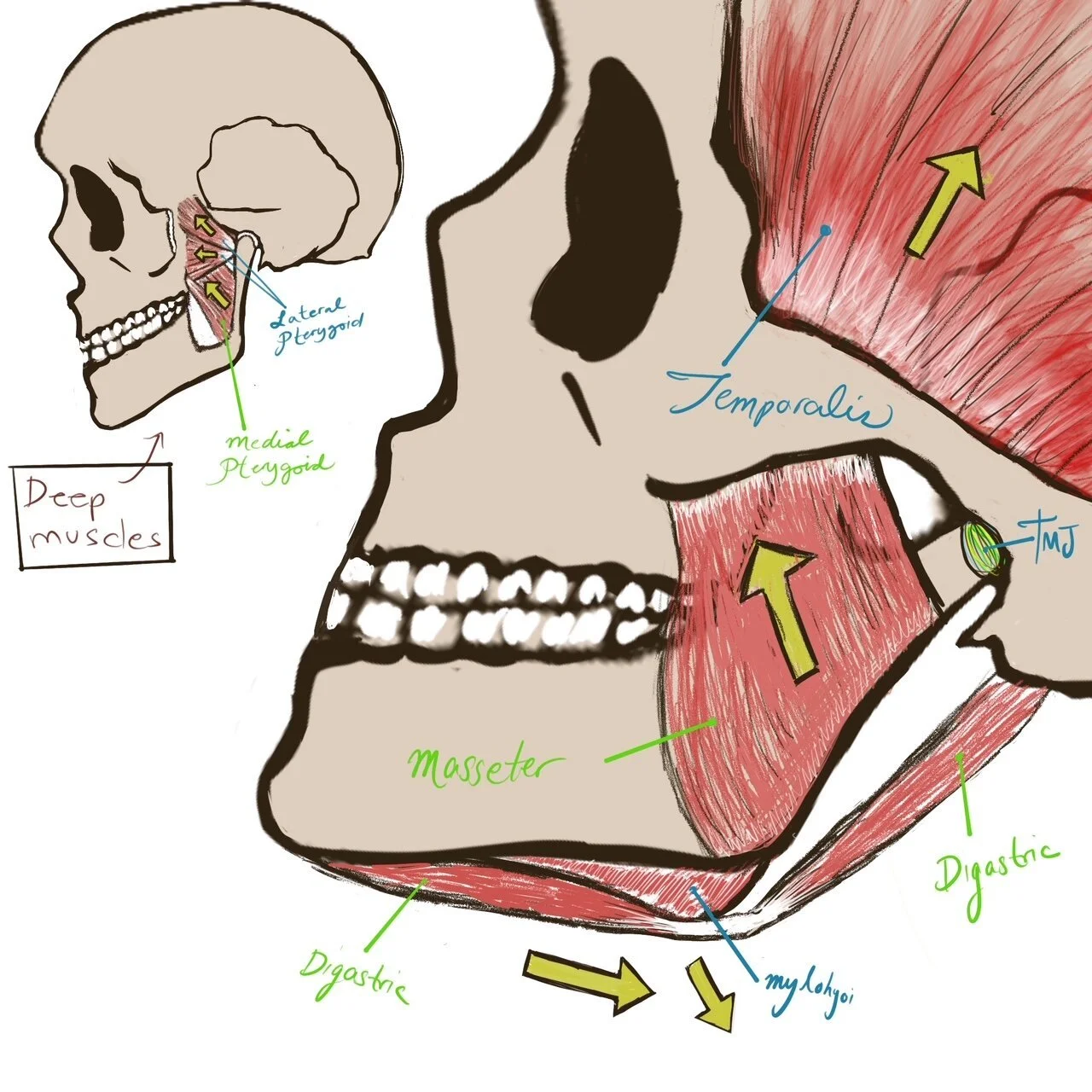Why Does My Jaw Hurt? How Physical Therapists Can Help You Heal Your TMJ Pain
"Why Does My Jaw Hurt?” How Physical Therapists Can Help You Heal Your TMJ Pain"
Artwork by our very own Dr. Shiri-lee Uriel PT, DPT, CSCS
What is the Temporomandibular Joint (TMJ)?
The TMJ is a joint that includes the mandible (jaw bone) and the temporal bone of the skull. The space between these two bones includes articular fibers / collagenous fibers, an articular disc and retrodiscal material. It is this retrodiscal material that is implicated and causing pain in clients that are dealing with TMJ dysfunction. When the client opens their mouth, the articular disc translates anteriorly (forward). That anterior disc displacement is a normal response, as long as there is no pain associated with the opening of the jaw. Even clicking and popping can be found in the asymptomatic population. The issue is when the articular disc remains too far forward on a more permanent basis. As a result of that, the retrodiscal tissue translates forward as well, getting compressed in the space between the bones. The retrodiscal tissue is highly innervated by nerves and can cause a sharp pain while opening or closing the jaw. A clicking, catching, shifting or locking of the jaw may also occur during the jaw opening/closing process.
How & Why Does the TMJ Get Affected?
The TMJ can cause jaw pain due to several factors. Below are the most common reasons why a client may present with jaw pain:
Poor neck & shoulder posture
Joint restrictions to the upper cervical (neck) region & the actual TMJ
Muscle tightness to neck muscles such as the sternocleidomastoid & scalenes
Overuse of the mastication muscle (masseter)
Overuse of the muscles that attach to the TMJ (lateral/medial pterygoids, temporalis)
Poor office ergonomics
Bruxing (grinding teeth at night)
Stress and anxiety that causes subconscious jaw gripping/neck muscle hyperexcitability.
Multiple reasons may be involved, and ultimately these lead to excessive inflammation of the joint lining and capsule. That inflammation results in a pain response.
Many clients don’t understand how the neck can implicate the TMJ. The temporal bone is a part of the skull, which sits atop the cervical spine. The base of the skull is called the occiput, and it is attached to the top cervical vertebrae (called “atlas”). For this reason, I often see cervical spine involvement when working with my clients who have jaw pain.
What can be done about it?
So, all of that is great… but what the heck can YOU and I do TOGETHER to rid you of your jaw pain? Physical therapy is a very effective tool in treating TMJ dysfunction because it addresses the root cause of the condition. Through a thorough subjective assessment, we can determine WHY this jaw pain is coming on in the first place. As stated above, it is very often related to behaviors that can be modified to offload the TMJ. The TMJ is just like any other joint- if too much strain and pressure is applied to the surrounding tissues, it will hurt!
Below are the most effective treatment interventions I have utilized to help my clients heal from their jaw pain:
Deep Neck Flexor (DNF) and Periscapular (shoulder blade) motor control drills
Joint mobilization/manipulation to the upper & lower cervical spine, upper & mid thoracic (mid back) spine
Intraoral joint distraction and mobilization techniques to the TMJ
Soft tissue mobilization, trigger point therapy & stretching to the neck muscles
Soft tissue mobilization, trigger point therapy (both extraorally and intraorally) to the jaw muscles
Client education strategies about effective ergonomic set up at home/at work
Client education strategies for stress management & awareness of resting jaw and tongue positions
We can (and have) treated jaw pain and orofacial pain very successfully at our office using these techniques. We also refer patients to our acupuncturist if we find significant trigger points in the neck/jaw muscles. This is an excellent and highly effective adjunct to your treatment.
If you, or anybody you know has jaw pain, orofacial pain, neck pain, or headaches, please contact us at 347-560-6920 or at paul@sarricapt.com
We would be happy to care for you, and to help you get back to a healthy, fulfilling, and pain free life!
Dr. Paul Nasri, PT, DPT
Doctor of Physical Therapy
Sarrica Physical Therapy & Wellness
Staff Physical Therapist
paul@sarricapt.com



